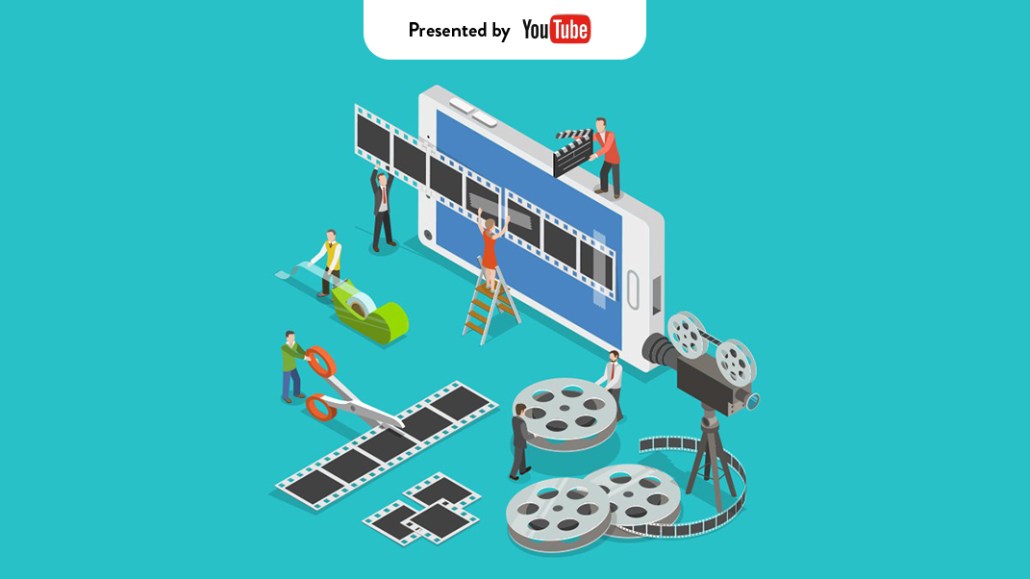‘Building 360-degree businesses’: How video creators are making money today

On the first morning of VidCon, about 100 marketing industry people assembled in a room in the Anaheim Convention Center to learn about the business of being a creator today. To one panelist, a solution for the hundreds of creators wandering the floors below lies in blockchain technology.
“The power is not on an arbitrary decision-maker,” said Jake Branzburg, head of marketing at YouNow. “On YouTube, Facebook, Twitter, [creators] can be demonetized overnight. [The benefits go to] content creators, developers, and frankly, the users that are supporting them.”
VidCon, the annual conference for the digital video industry, may have started with stars who build a business on YouTube. But YouTube’s brand-safety efforts have demonetized smaller channels, and even YouTube’s top creators saw their ad revenue drop over the last year. The continued unease has led creators to look beyond YouTube for growth. Some creators have entered the blockchain frenzy by working with platforms like YouNow and Brave. Others are growing their personal brand by creating and selling merchandise.
“Creators are increasingly acting as entrepreneurs,” said Zach Blume, co-founder and managing director of digital studio Portal A. “This begins with their massive following on YouTube, but is extending to new areas such as original IP, book publishing, apparel and merchandise sales, launching their own production companies, live events and much more.”
Ad position: web_incontent_pos1
When it comes to merchandising, Amazon has been making its pitch. The e-commerce giant was a sponsor at this year’s VidCon, and for Amazon, it’s not about touting Prime Video. Merch by Amazon offers creators a way to produce and sell branded merchandise on demand. YouTube-focused creators such as Hannah Hart and Shane Dawson create both T-shirts and PopSockets. Amazon’s pitch to creators is there are no upfront costs or inventory risk, as in they won’t end up with a bunch of unsold products in a warehouse.
“The creator gets paid when something sells. You build this great selection and have no great expense in doing so. It really builds a long-standing relationship,” said Ivan Lopez, Amazon’s head of strategic partnerships, on the panel.
Indeed, fans at VidCon donned creator-branded T-shirts, hats and pins. Creators also wore their own, apparently not a faux pas among the YouTube community.
Ad position: web_incontent_pos2
You see, my fellow jokers (and joker-ettes!!), the joke here is that many Youtubers already wear their own merch, especially at conventions such as these. Enjoy the chuckles and keep those goofs and gags merry!
Xoxo
Your ol' Uncle Jack— jacksfilms (@jacksfilms) June 20, 2018
“A lot of YouTubers sell crap,” said actor Olan Rogers on a panel about merchandising. “I remember someone sold a shirt that said, ‘Yes.’ I try to reach out to designers and make something that I would want to wear. If you’re not going to buy something that you sell, don’t sell it.”
“I sell hoodies, and I wear them all the time,” said Dean Dobbs, of YouTube channel Jack and Dean, during the same panel.
Beyond ad revenue and merchandise, some creators are benefiting from subscriptions through platforms like Patreon. Wyatt Jenkins, vp of product at Patreon, said that for those who create on a regular basis, “they now have the option to turn their passion into a career by creating a membership.”
Yet platforms in attendance at VidCon pitched themselves as fair partners to creators. Instagram and Snapchat each lured creators into their exclusive spaces at the event to chat up their new tools and other strategies for creators. Meanwhile, livestreaming app LiveMe hosted a booth on the show floor, where every hour, they shot actual cash out over the crowd. Indeed, LiveMe creators thrive from in-app tipping rather than an ad-supported model.
With all the grievances about YouTube, creators to marketers didn’t call for the end of the platform. During the blockchain panel, Rhize CEO Marie Leaf pointed out the platform’s democratic nature.
“I hate the Uberization of stuff, but the taxicab service, it was all centralized,” Leaf said. “What Uber did was allow the average driver to come onto the system. I would liken that to what YouTube does today — the average person can become a creator.”
For more analysis and our top stories on digital video, TV and entertainment, subscribe our weekly Video Briefing email.
More in Marketing

In the marketing world, anime is following in the footsteps of gaming
As marketers look to take advantage of anime’s entry into the zeitgeist, they might be wise to observe the parallels between the evolution of anime as a marketing channel and the ways brands have learned to better leverage gaming in recent years.

With the introduction of video ads and e-commerce, Roblox looks to attain platform status
Roblox is expanding into more areas than just ads in 2024. Much like platforms such as Amazon and Facebook have transcended their origins to evolve from their origins as online marketplaces and social media channels, Roblox is in the midst of a transformation into a platform for all elements of users’ virtual lives.

PepsiCo wants to remain a ‘driver of culture’ as it turns to influencers and activations amid rebrand
The soda-maker says it can translate cultural relevance into sales volume.
Ad position: web_bfu




